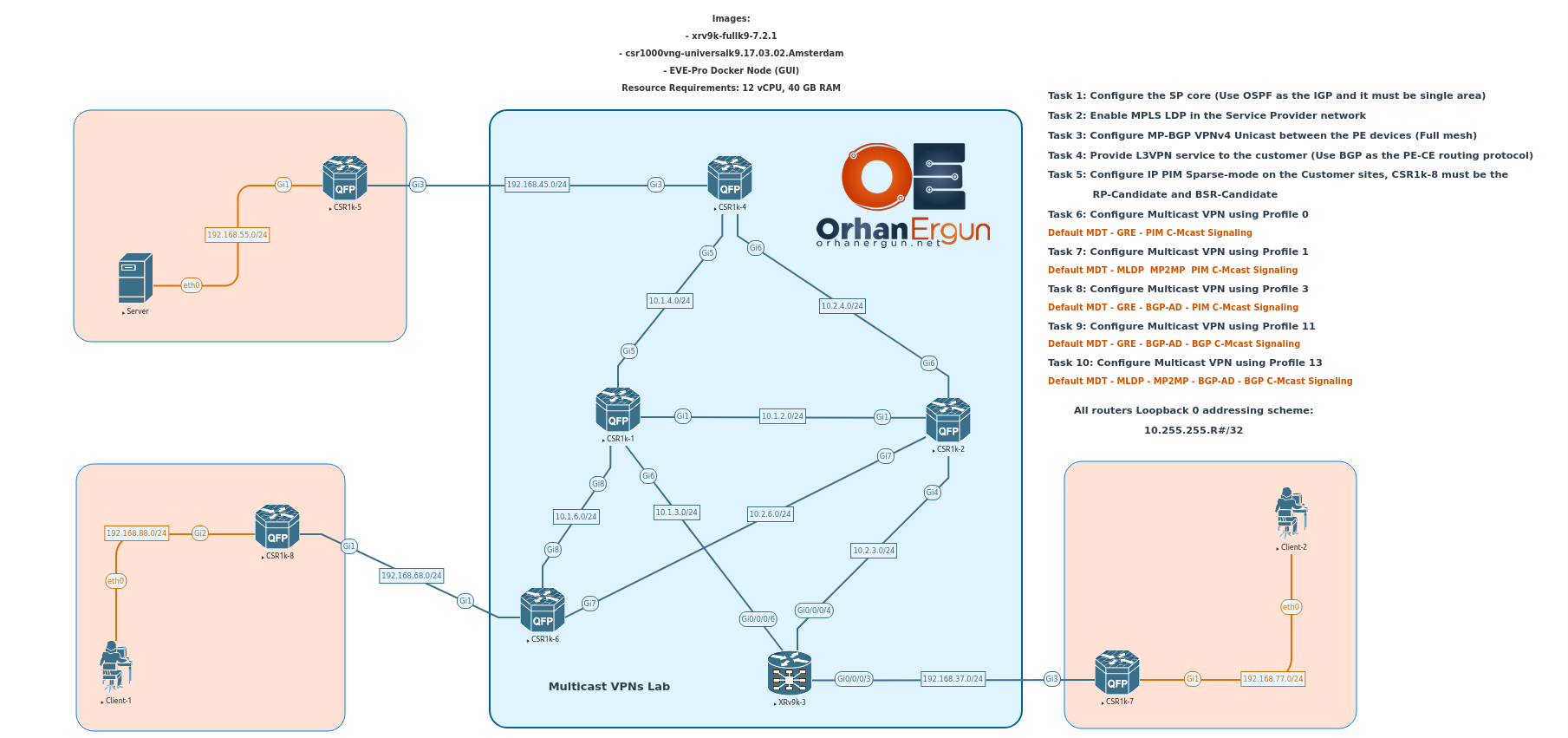Multicast VPNs (MVPNs) enable efficient multicast traffic delivery across MPLS-based VPNs, allowing service providers to support applications like IPTV, financial market data, and real-time collaboration tools. Traditional PIM-based multicast approaches can be inefficient at scale, so MVPNs use provider-provisioned multicast trees (PIM, mLDP, RSVP-TE) and BGP-based signaling (NG-MVPN) to optimize multicast traffic distribution. BGP-based MVPN eliminates the need for traditional PIM within the core, significantly improving scalability, control, and convergence times.
By implementing MVPNs, service providers can ensure secure, efficient, and scalable multicast traffic delivery for enterprise and residential customers, making it a critical technology in modern SP networks.
You might also be interested in these labs:
The default username and password for images used in this course is as follows, however you will hear new passwords during the course if the instructor changes the credentials:
Image name | Username | Password |
IOL images | No username | No password |
CSR1000v | Admin | Admin |
C8000v | Admin | admin |
Viptela devices | Admin | admin |
Windows Server | Administrator | Test123 |
IOS-XR | Admin | Enter new password |
Cisco ASA 802 | no username | no passwd, hit enter |
Cisco ASA 8.4.2, 9.1.5 | no username | no passwd, hit enter |
Cisco ASAv | no username | no passwd, hit enter |
Cisco IPS | cisco | ciscoips123 |
Cisco WSA | admin | ironport |
Cisco ESA | admin | ironport |
Cisco WAAS | admin | default |
Cisco XR9K | Cisco | Cisco |
Cisco NX9K | admin | admin |

